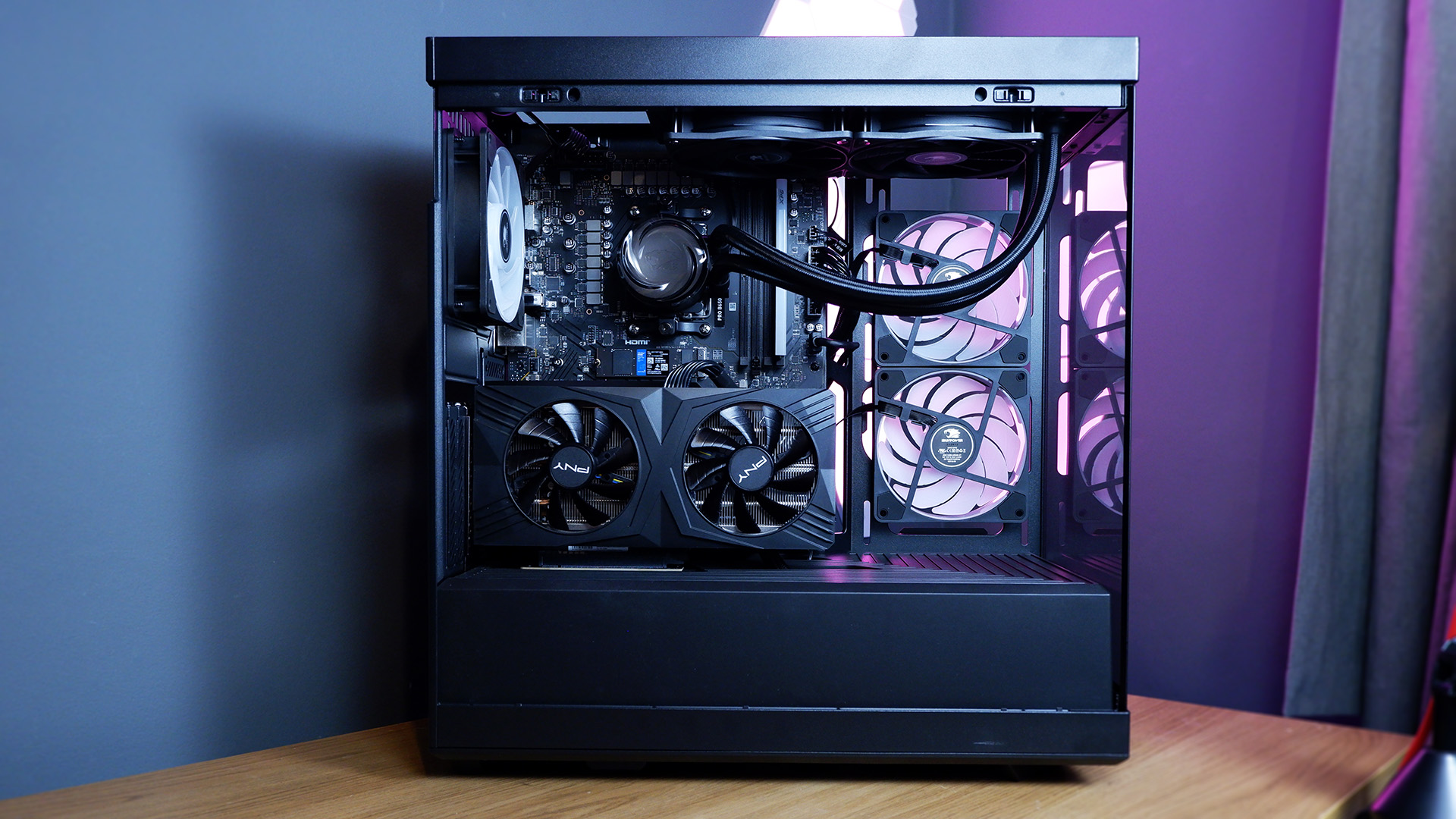Our Verdict
A ready-made machine for the right price: that's what iBuyPower is offering in this RTX 4070 Super-powered PC. The downside is it's a little loud, but the upsides easily outweight that.
For
- Smart spec
- Mostly well-known brands
- Solid chassis
- Liquid cooling performs well
- Vertical GPU mount is a plus
- Plenty of RAM
- Packaged well
Against
- Loud
- Relatively high GPU temps
PC Gamer's got your back
I'm thoroughly impressed with this iBuyPower gaming PC. It showed up at my house from half the world away and I was only one menial GPU installation away from a well-performing gaming PC. That's the simplicity and ease I want out of a pre-built machine, especially one that's as competitively priced as this.
There's always a certain degree of concern when importing a gaming PC from the US into the UK. That's a long way to go and gaming PCs are not good travellers. There's a risk that the gaming PC boxed up on one side of the pond is an expensive bag of bits jingling around in a metal box when opened on the other—as our Dave recently found out with an HP gaming PC. Thankfully, the iBuyPower arrived in one piece—or rather two, to be exact.
It showed up at my door in a fairly large cardboard box, which contained the chassis box including the PC and a separate box for the graphics card. That's an important step for any gaming PC in transit: even the lightest modern graphics cards are pretty heavy by historical standards and PCIe slots will happily crunch a PCB left in there.
This means it's up to the customer to install the GPU themselves, which might seem a little daunting if you've bought a pre-built gaming PC to avoid building one yourself—but honestly, it's a pretty simple process. Made even easier by the unavoidable sheet of instructions stuffed inside the PC's tempered glass side panel.
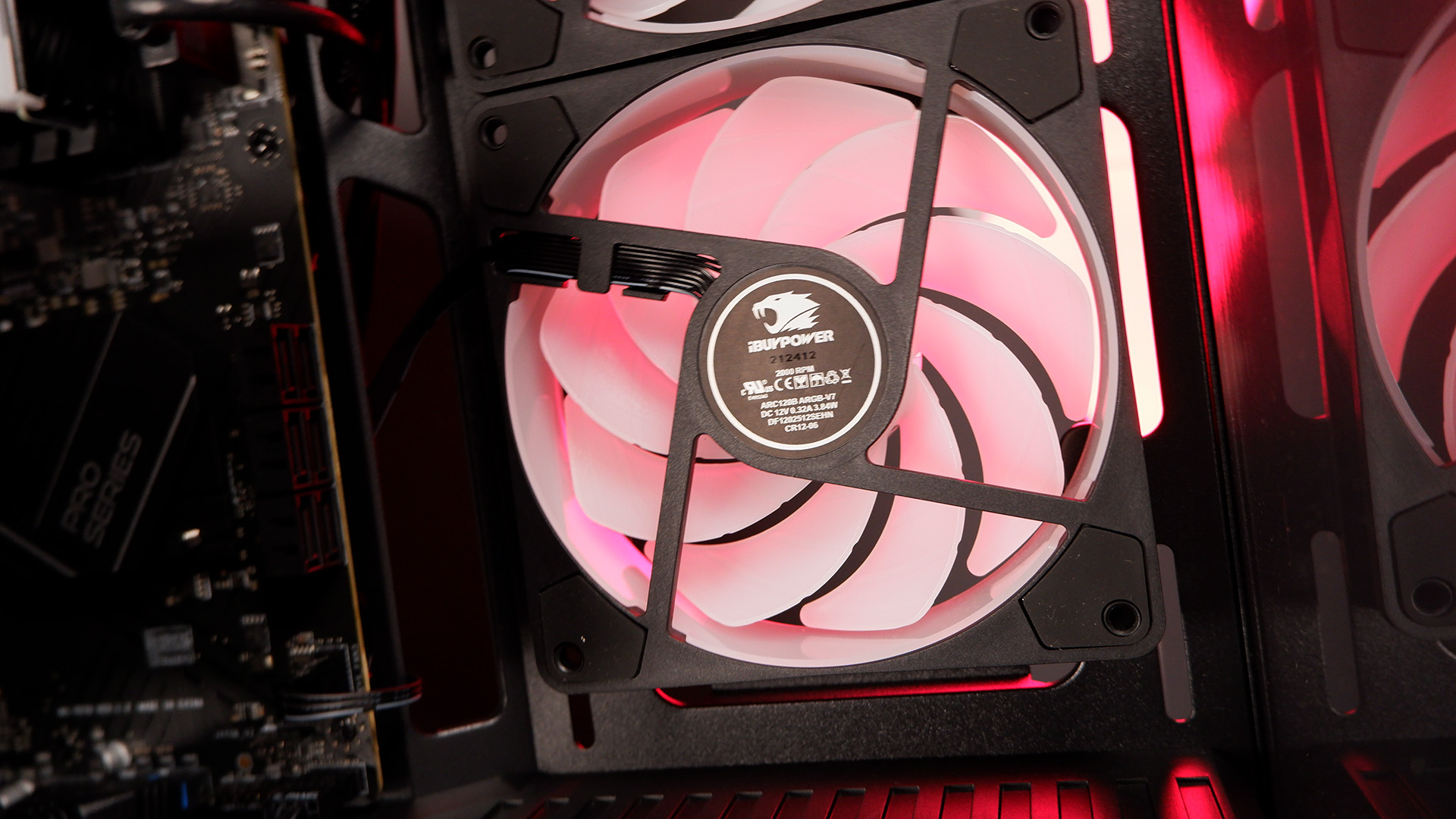
CPU: AMD Ryzen 7 7700X
GPU: PNY GeForce RTX 4070 Super 12GB Verto
RAM: XPG Lancer Blade 32 GB DDR5-5600 (dual channel)
Motherboard: MSI Pro B650-VC WiFi
SSD: WD Blue SN580 1 TB
PSU: High Power 750 W 80 Plus Gold (HP1-J750GD-F12S)
Chassis: Hyte Y40 w/ vertical GPU mounting bracket + riser cable
Cooling: 3x iBuyPower 120 mm, iBuyPower 240 mm Addressable RGB Liquid Cooler
Rear connectivity: Wi-Fi 6E, 4x USB Type-A (5 Gbps), 3x USB Type-A (10 Gbps), 1x USB Type-C (20 Gbps), 2.5G LAN, audio, HDMI/DisplayPort
Front connectivity (chassis): 2x USB Type-A (5 Gbps), 1x USB Type-C (10Gbps)
Price: $1,649
It's a somewhat unconventional graphics card installation in the Hyte case used for this PC—it comes with a vertical GPU mount. That means there's a riser cable and an unusual bracket stuffed in front of the motherboard. The steps to install the card remain the same, however.
Unscrew PCIe slot screws, plug card into PCIe slot, resecure screws, connect power cable, done. My only weariness for the process is the fact that there's potential for someone not that familiar with the melting 12VHPWR connector issue to not secure this GPU cable into the socket correctly.
With the GPU installed, I hit the power button and this PC whizzed to life first time. I headed straight to the BIOS to find it was set-up just how I like it. The generously-sized XPG Lancer Blade 32 GB DDR5 kit is rated to 5,600 MT/s, which is only possible with EXPO settings enabled.
This was already taken care of in the BIOS for me. As was Re-Size Bar support, which allows for more effective communication between CPU and GPU memory.
With everything ready to go, I set about booting into Windows. The initial start-up process has become something of a chore for someone who tests a lot of PCs—I swear they add another thing to say no to every single year—and I set about turning down Microsoft's many wasted offers and attempts to use my data as fast as possible. Next, it's on to testing.
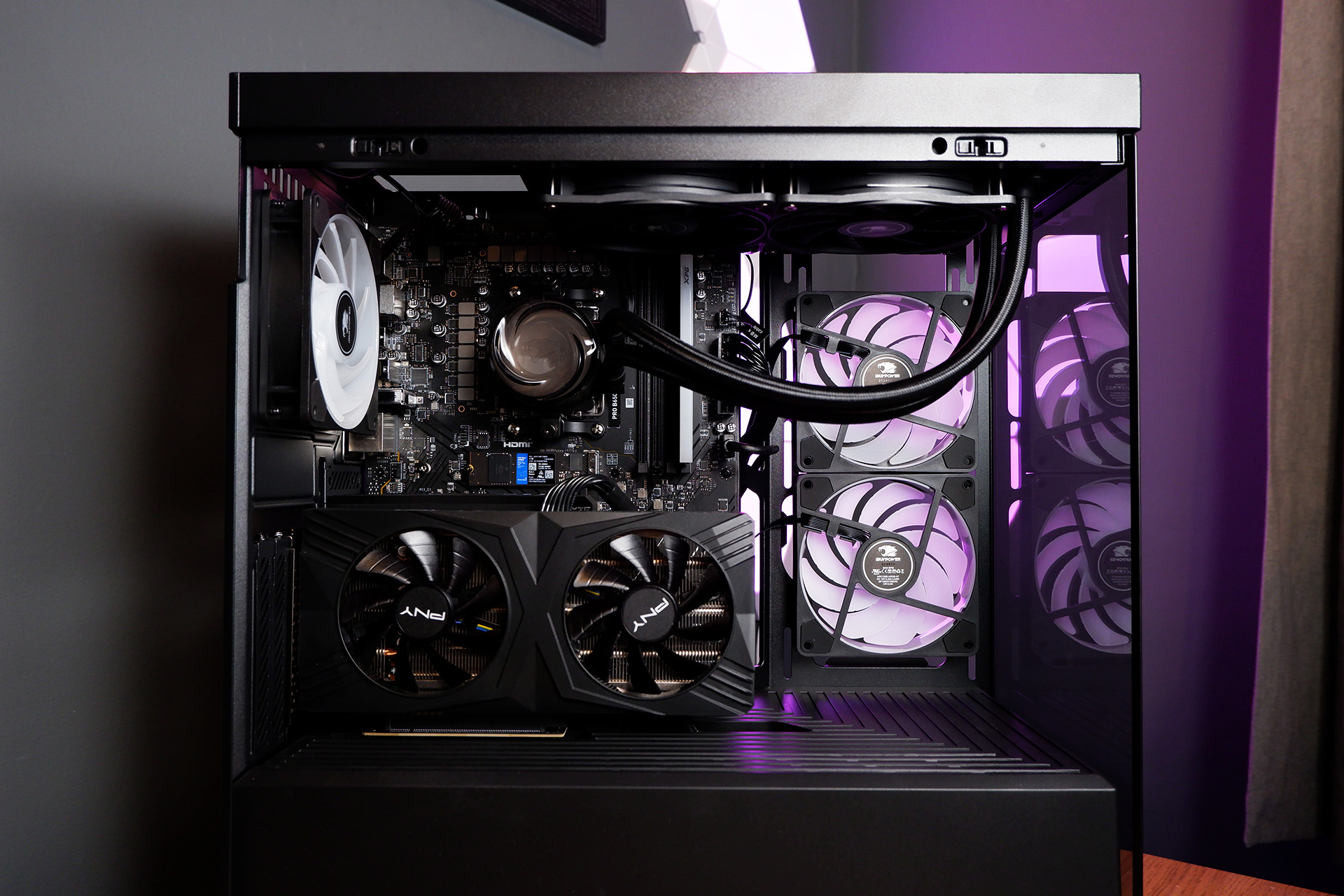
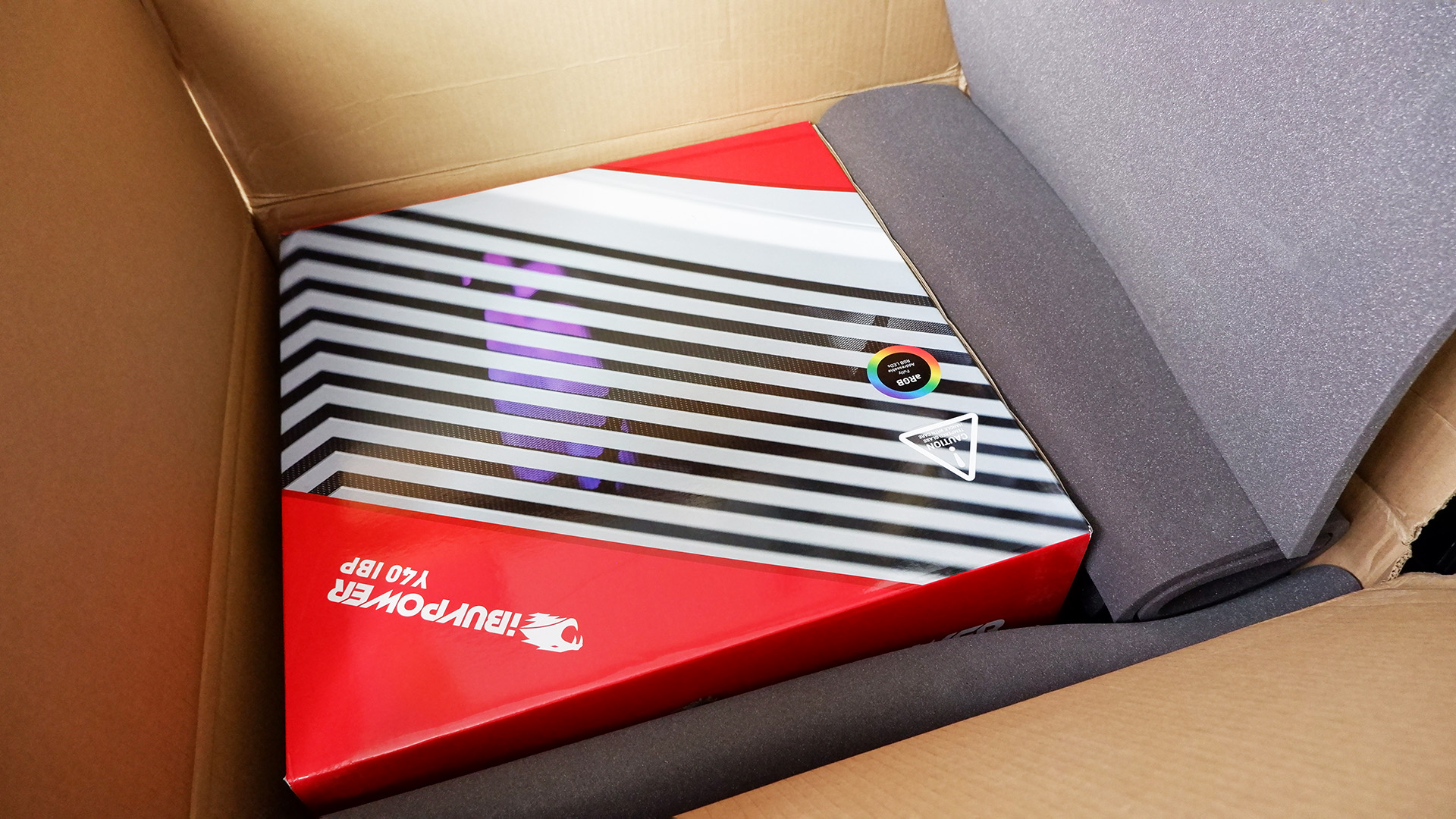
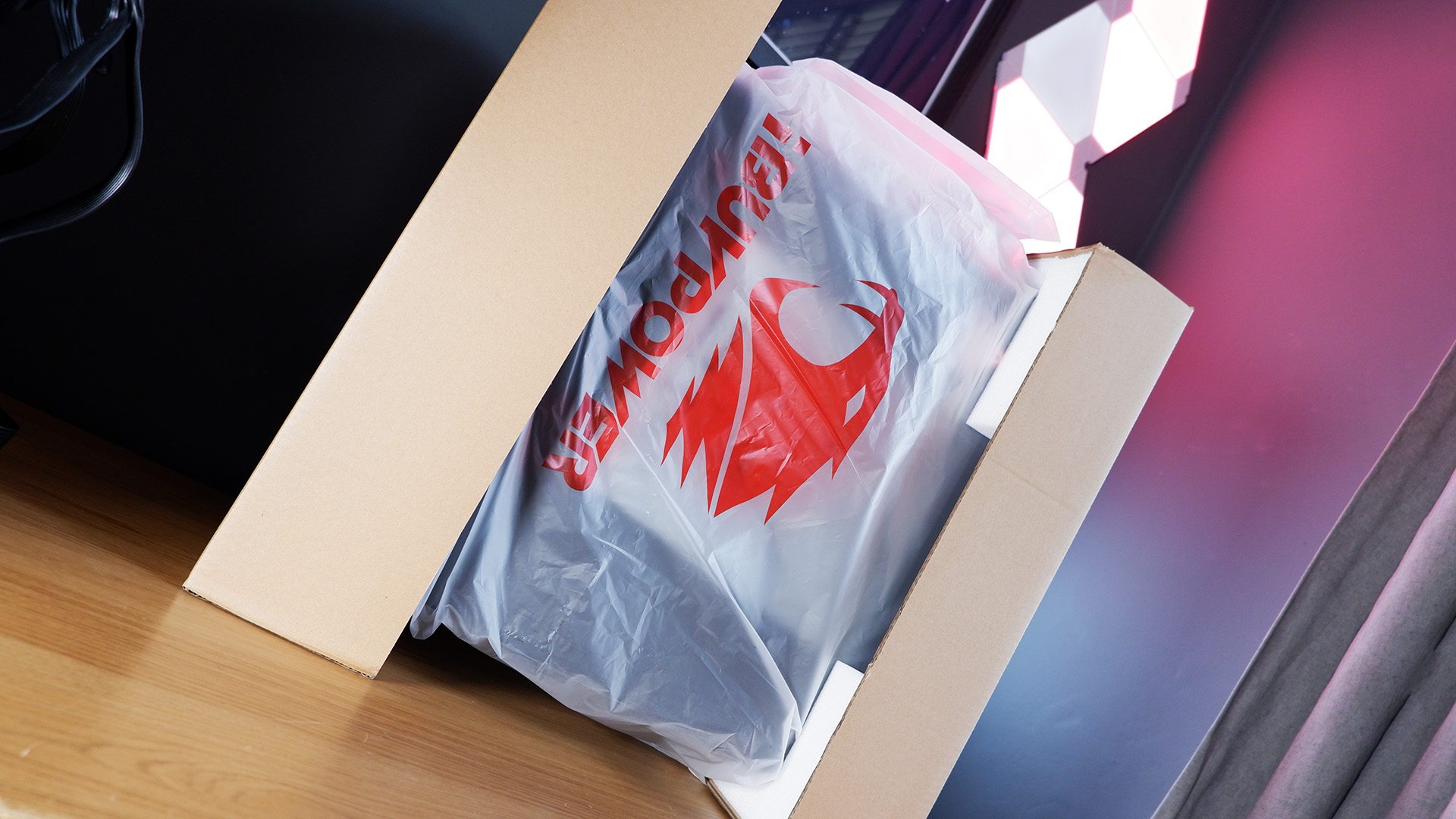
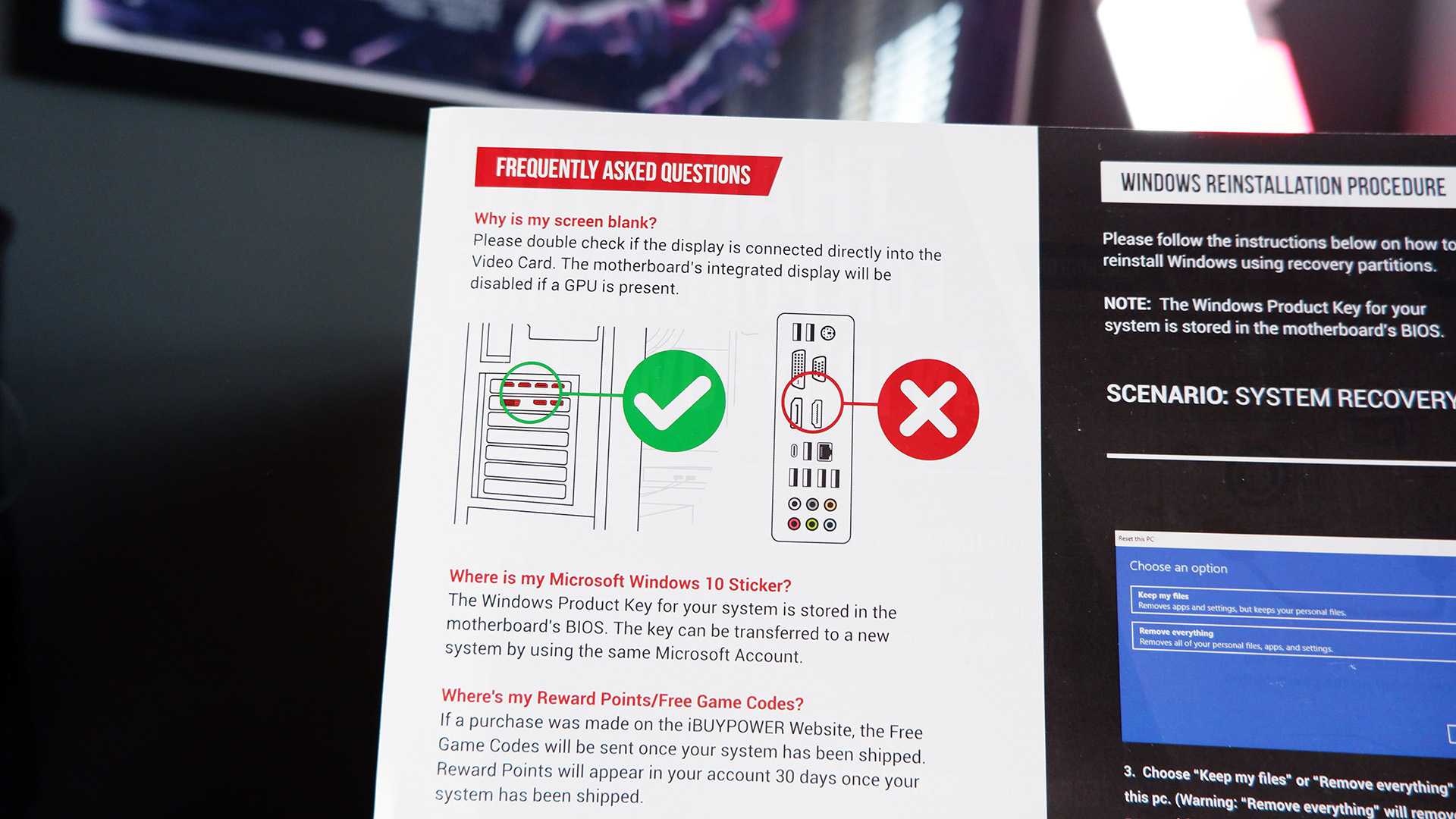
Let's talk performance, then. I have a handful of gaming PCs to hand, including a mini PC of my own creation with an RTX 4070 Super inside it, which makes for an interesting comparison.
From the gaming tests, it's clear we're getting the expected level of performance out of this iBuyPower machine. The desktop tower is often trading blows with the comparative mini PC in games, and it trounces the Lenovo Legion Tower 5i we previously tested with an RTX 4060 inside it. Everything is where you'd expect it to be.
The system benchmarks, which namely push the CPU and SSD performance, are also more or less what we'd expect. They show the 7700X sitting below the 9700X, which makes complete sense, but not by much. The newer 9900X is a moderate improvement on the chip it replaces—AMD saved up the biggest performance uplift for its 3D V-Cache CPUs, namely the 7800X3D and 9800X3D. But those chips come with a cost, and I feel the 7700X is still a savvy pick for value for money.
The iBuyPower does struggle a little more when it comes to cooling. I'm referring mainly to the PNY-made RTX 4070 Super. This is a pretty basic budget model, with two fans and a thin heatsink, which might explain why it ran quite a bit hotter than the Founders Edition in the mini PC of my own design—you really were lucky to get one of those FE models for MSRP. Though the Hyte case on the iBuyPower doesn't offer the most direct airflow to the graphics card—in fact, it almost misses it on purpose—which might also explain why it's a bit on the hotter side.
Still, a maximum GPU temperature of 78°C while gaming is pretty good going. The CPU temperatures are good, too. Though the machine is loud for keeping temperatures in check. I would usually look to knock the fan speeds down a bit in the BIOS to keep the noise to a minimum, but I don't want to increase the idle temperatures any further here. They're already some of the highest we've tested, and up there with the mini PC.
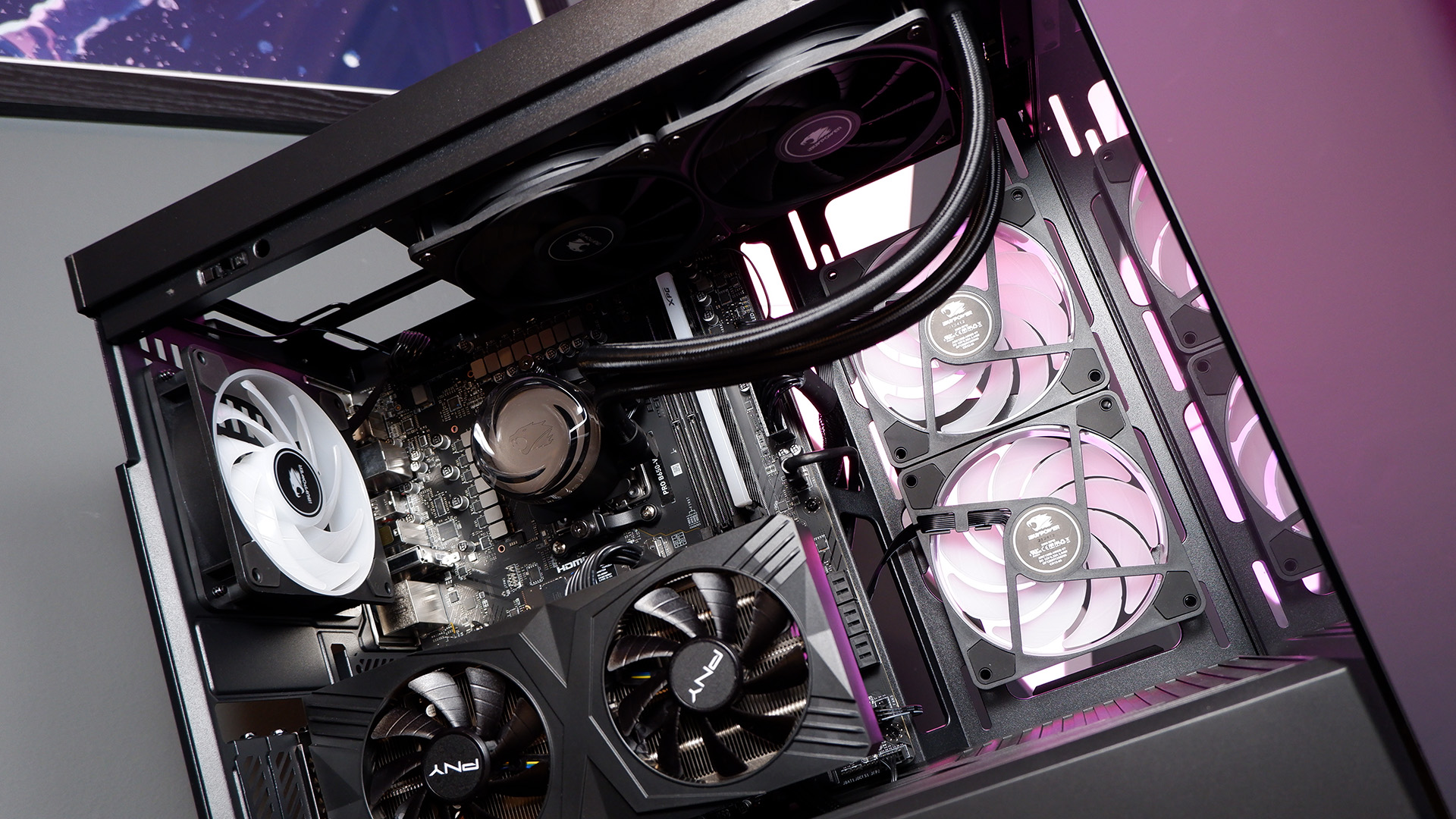
The liquid cooler included for the CPU is a pretty basic model, though it comes with RGB lighting around the pump. Combined with the RAM and lighting across the three fans, I have to admit it's a good-looking machine. The RGB elements are all connected via a single controller on the rear of the motherboard tray, too.
The Hyte case is a highlight. We often see cheap gaming PCs ditching the known brands in favour of cases made with cheaper materials. While it's no pastel pink Y70 and far less refined, this case looks the part of a mid-range gaming PC. Importantly, it's easy to take apart—the panels simply pop off with a light pull.
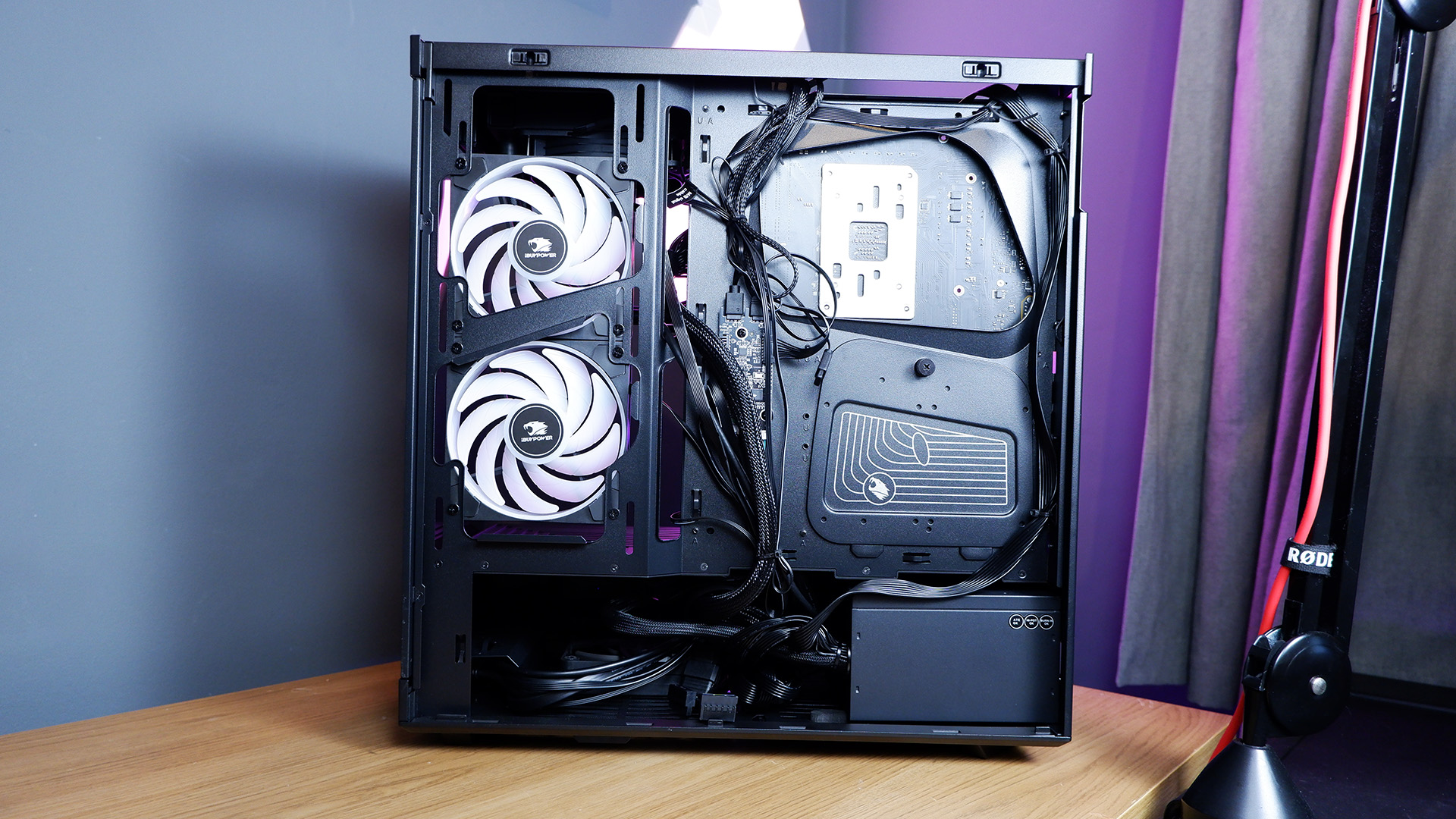
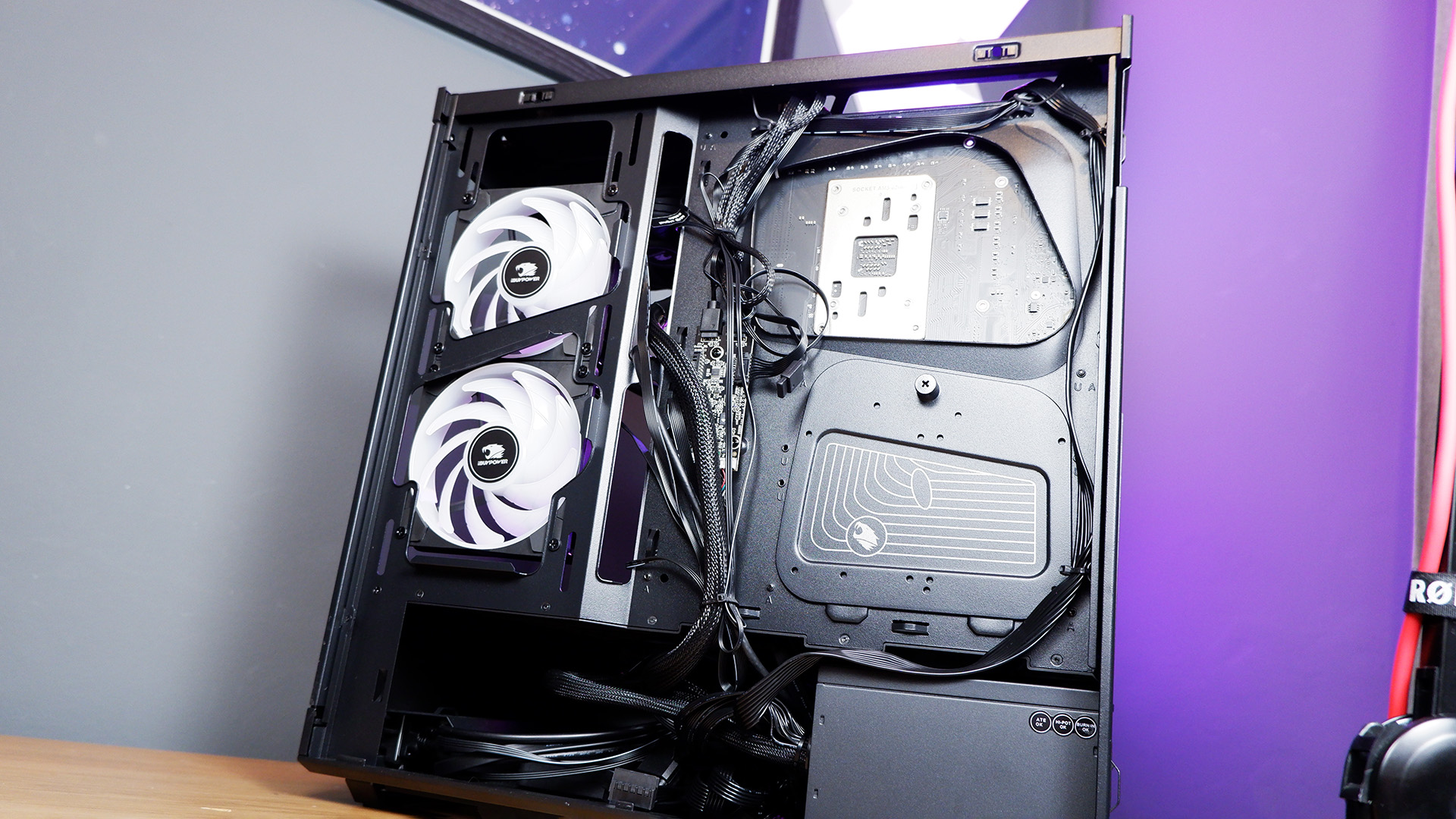
Cable management is pretty good here. It's much neater than I'd leave it on my own build, anyways. Each cable run is zip-tied down, which means you need to manage the cables all over again should you make any adjustments later down the line. The PSU is non-modular but the spare cables are neatly tucked away under the large shroud—plus a few spare SATA power connectors are easily accessible should you want to swap an older SATA drive in from an old machine.
The PSU is from High Power, a Taiwanese company with manufacturing in Vietnam. That's where this PSU, the HP1-J750GD-F12S, was made. It mostly makes PSUs under other brand names as an OEM manufacturer, hence why it's not that well known in its own right.
However, I was able to dig out some testing by a trusted source, Cybenetics, for another HP1 PSU, which all looks good and doesn't ring any alarm bells. Similarly, High Power manufactures PSUs for Fractal Design and other known brands—that's not to say every unit it pumps out is flawless, but I'm not as worried as I would be if it were a complete no-name brand.
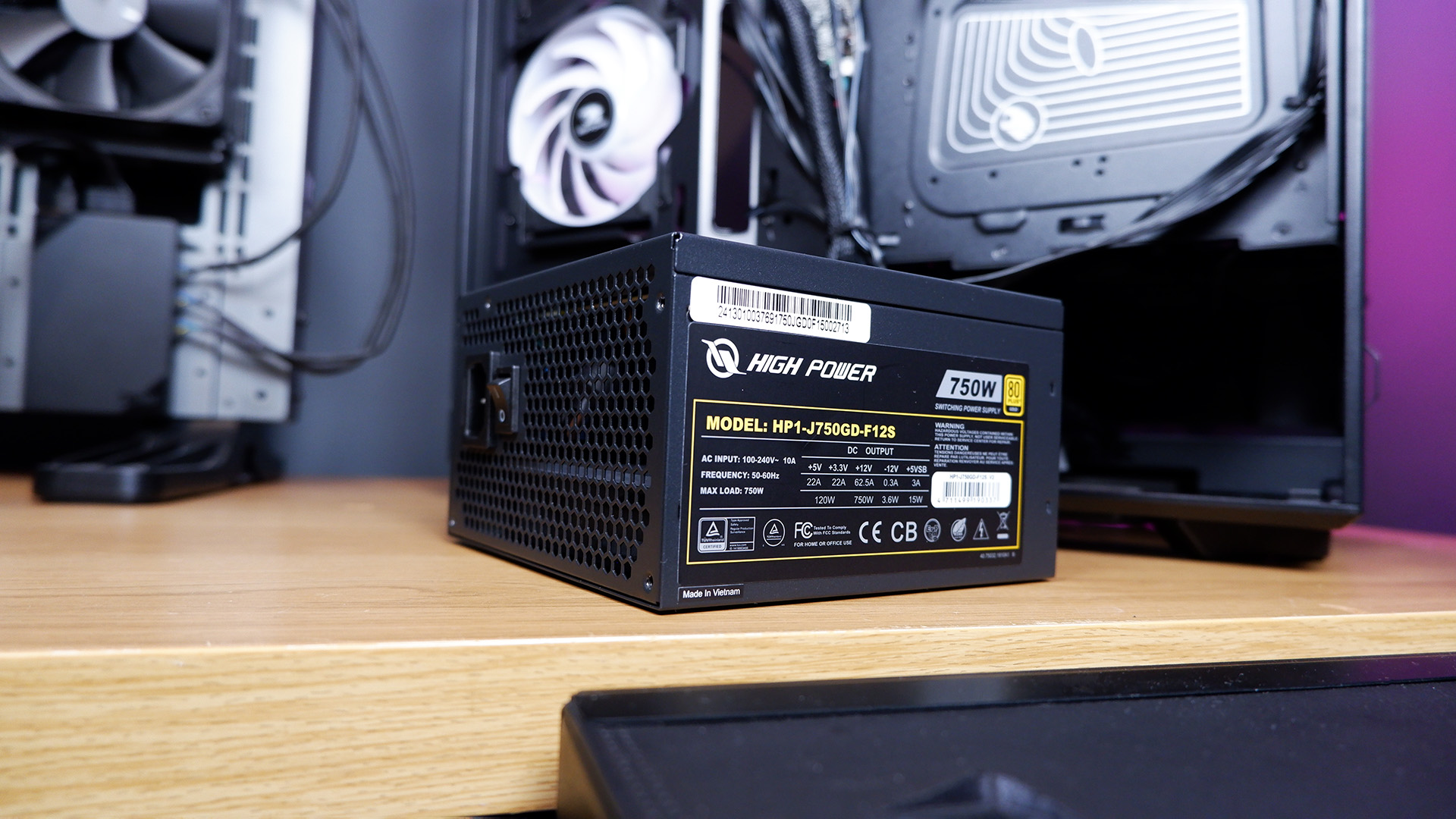
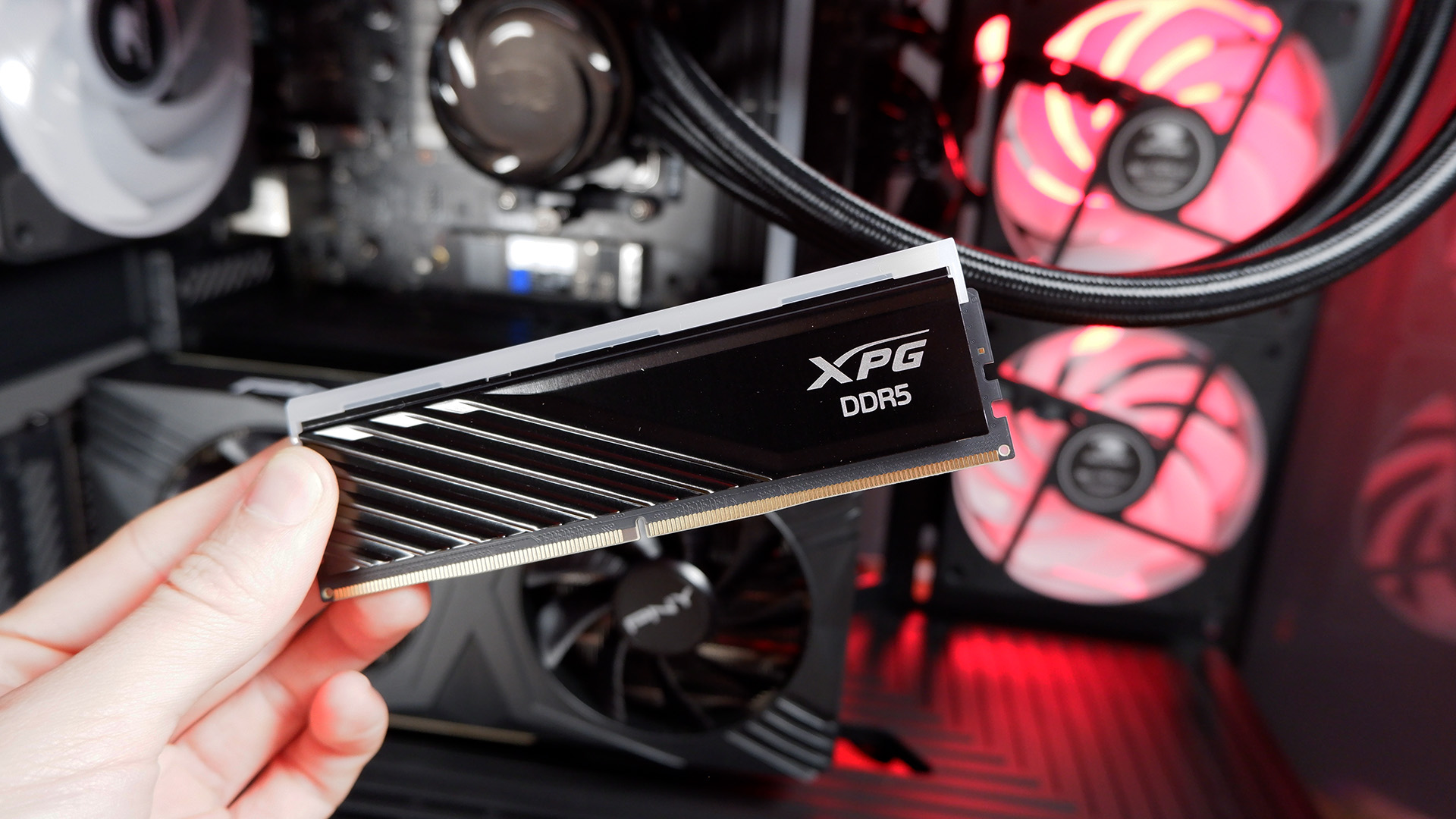
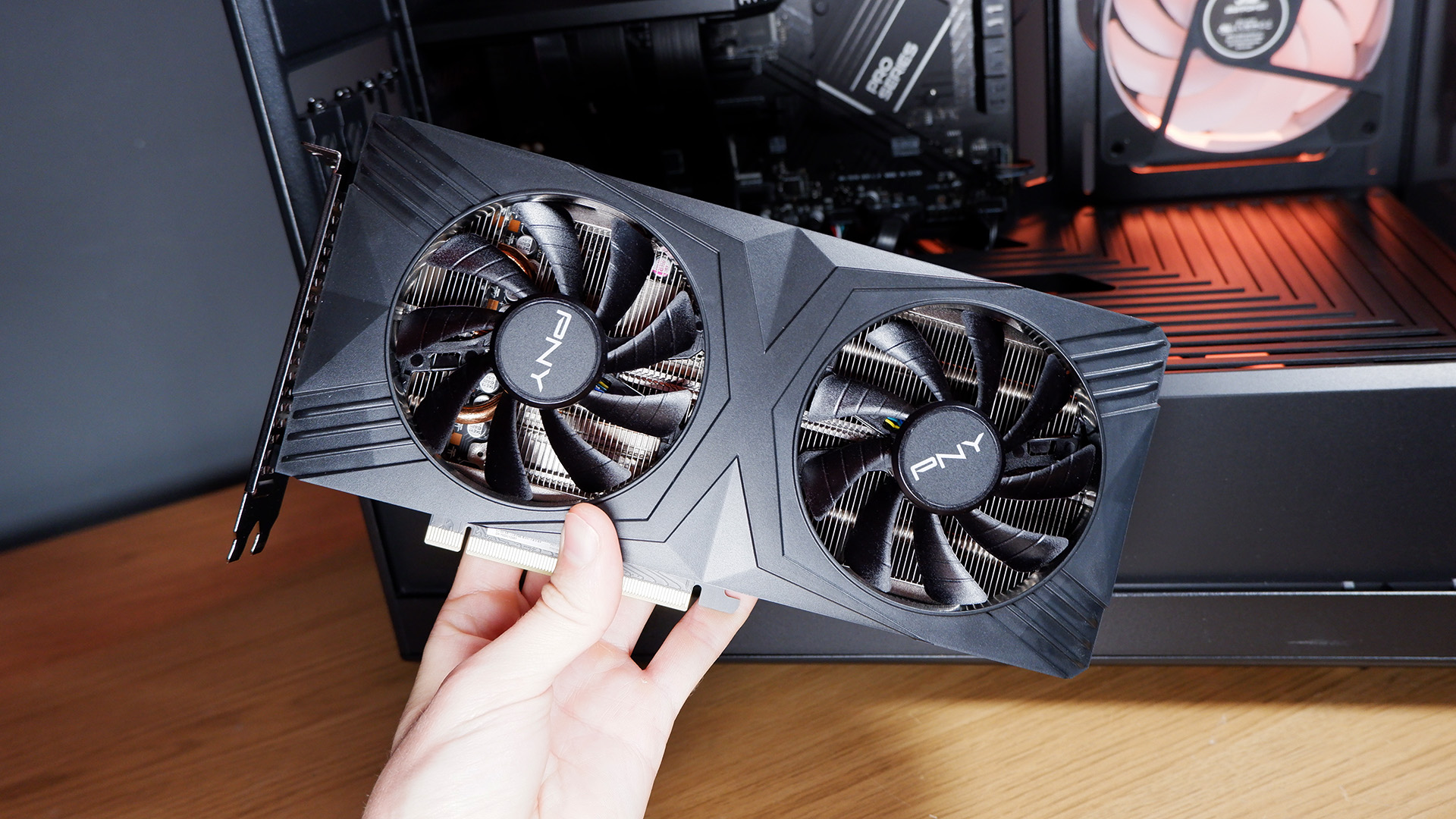
✅ You don't want to cut too many corners: With a solid case from Hyte and vertical GPU mounting, this iBuyPower machine offers more than you'd expect from more affordable pre-built PCs.
❌ You want peace and quiet: This machine isn't unusually noisy for a gaming PC, but it's definitely on the louder end of the PC gaming spectrum. A couple more premium fans wouldn't go a miss as an upgrade down the line.
You might want to consider an SSD upgrade pretty sharpish, actually. The 1 TB WD Blue SN580 is a reasonably snappy PCIe 4.0 SSD at 4,150 MB/s, though you could get close to double that from a top-end PCIe 4.0 drive.
I'm not so worried about the speed—clearly, that's not an issue from our SSD benchmarks when it comes to gaming—but 1 TB will get gobbled up fast. The MSI Pro B650-VC WiFi motherboard offers a spare PCIe 4.0 NVMe slot should you need it for an expansion down the line. There's no PCIe 5.0 connectivity on this motherboard, however.
All things considered, the RDY Y40 Valorant VCTA R003 is a very well-rounded gaming PC. It's priced at $1,649, which includes all the aforementioned parts plus a 3-year warranty (3 years labour, 2 years parts) and a gaming keyboard and mouse. Neither 'Chimera' peripheral is winning any awards from me but it's a handy money-saver if you're starting from scratch and want to spend every penny saved on the PC itself.
You'd probably be able to save a couple hundred bucks on a similar gaming PC in the sales if you're savvy. Though I'll bat for iBuyPower's machine here. It uses good parts, in a good chassis, and it's been carefully assembled. If I had ordered it myself, I'd be happy with what turned up for the money. And if you find it on sale, even better.
A ready-made machine for the right price: that's what iBuyPower is offering in this RTX 4070 Super-powered PC. The downside is it's a little loud, but the upsides easily outweight that.

Jacob earned his first byline writing for his own tech blog. From there, he graduated to professionally breaking things as hardware writer at PCGamesN, and would go on to run the team as hardware editor. He joined PC Gamer's top staff as senior hardware editor before becoming managing editor of the hardware team, and you'll now find him reporting on the latest developments in the technology and gaming industries and testing the newest PC components.
